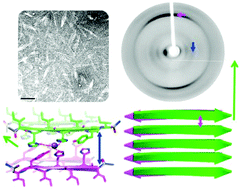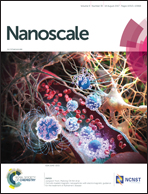The amyloid architecture provides a scaffold for enzyme-like catalysts†
Abstract
Natural biological enzymes possess catalytic sites that are generally surrounded by a large three-dimensional scaffold. However, the proportion of the protein molecule that participates in the catalytic reaction is relatively small. The generation of artificial or miniature enzymes has long been a focus of research because enzyme mimetics can be produced with high activity at low cost. These enzymes aim to mimic the active sites without the additional architecture contributed by the protein chain. Previous work has shown that amyloidogenic peptides are able to self-assemble to create an active site that is capable of binding zinc and catalysing an esterase reaction. Here, we describe the structural characterisation of a set of designed peptides that form an amyloid-like architecture and reveal that their capability to mimic carbonic anhydrase and serve as enzyme-like catalysts is related to their ability to self-assemble. These amyloid fibril structures can bind the metal ion Zn2+via a three-dimensional arrangement of His residues created by the amyloid architecture. Our results suggest that the catalytic efficiency of amyloid-like assembly is not only zinc-dependent but also depends on an active centre created by the peptides which is, in turn, dependent on the ordered architecture. These fibrils have good esterase activity, and they may serve as good models for the evolution of modern-day enzymes. Furthermore, they may be useful in designing self-assembling fibrils for applications as metal ion catalysts. This study also demonstrates that the ligands surrounding the catalytic site affect the affinity of the zinc-binding site to bind the substrate contributing to the enzymatic activity of the assembled peptides.



 Please wait while we load your content...
Please wait while we load your content...